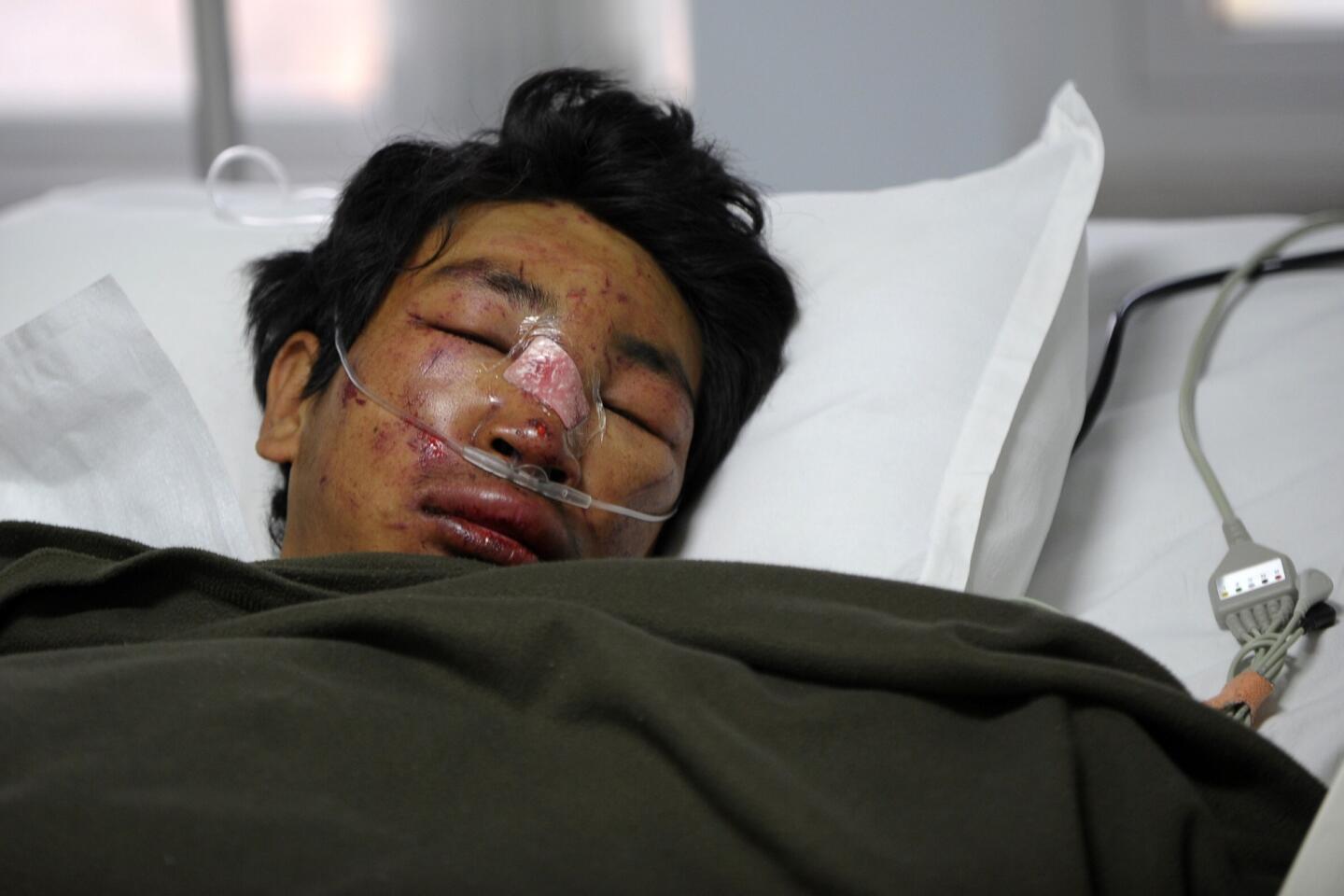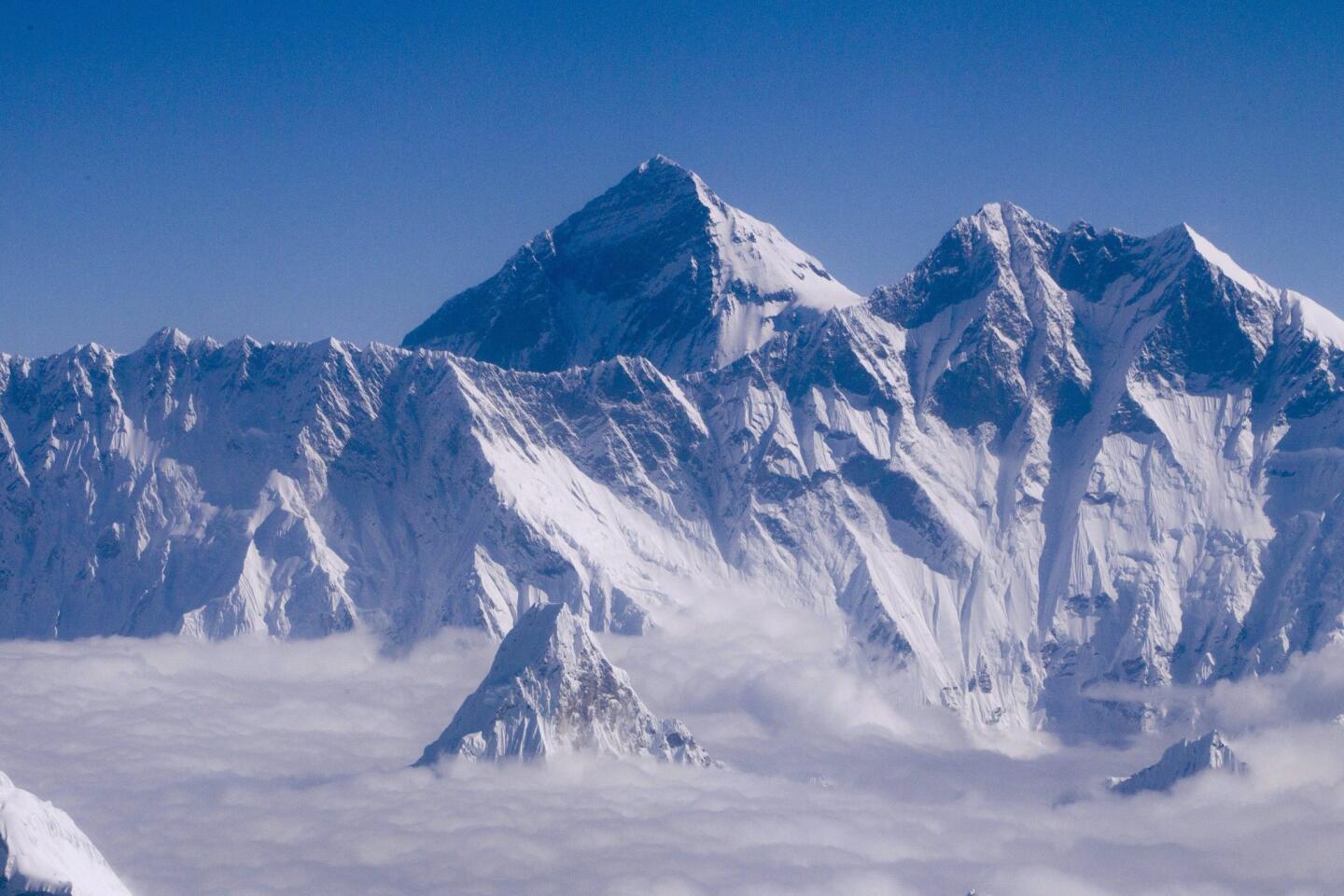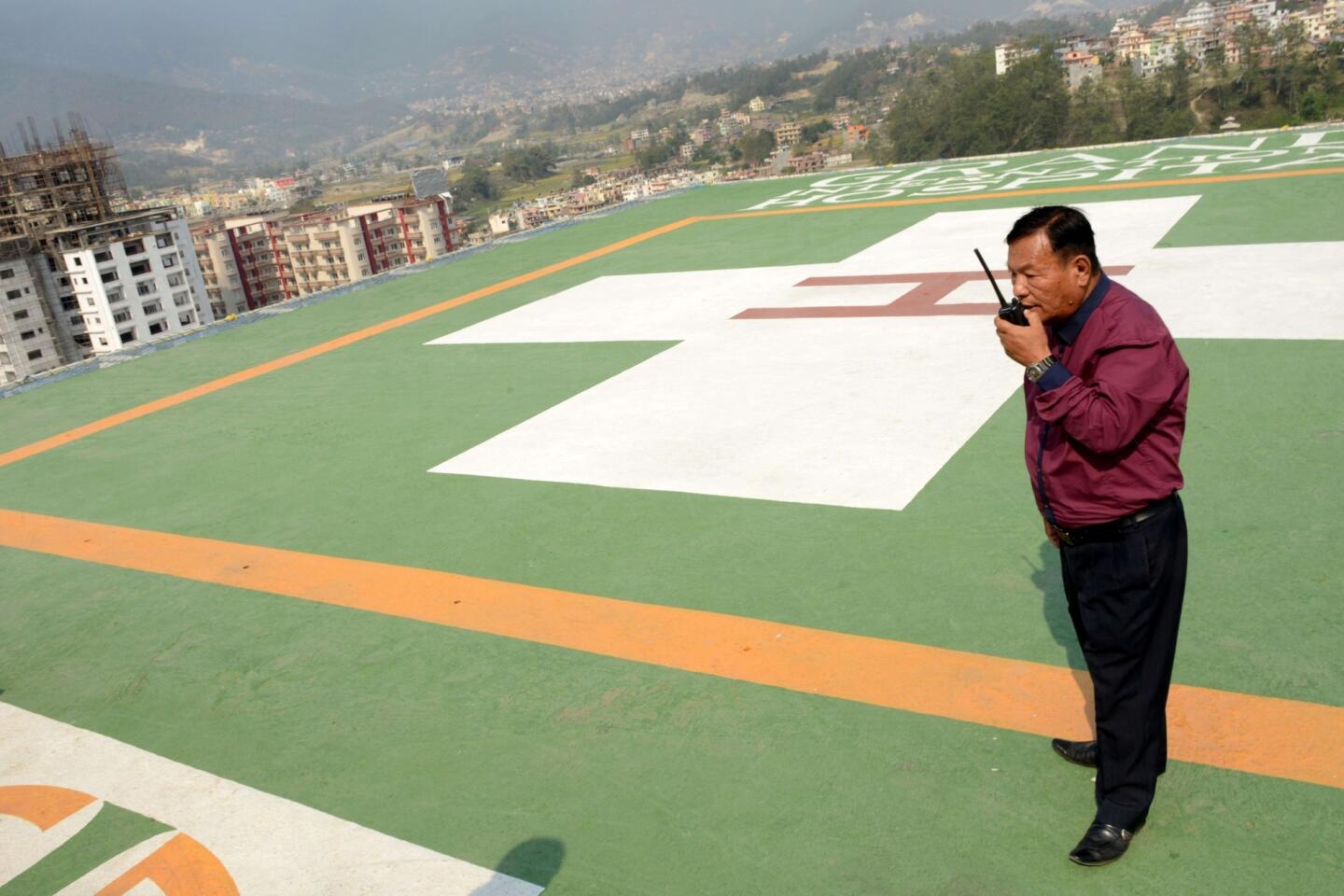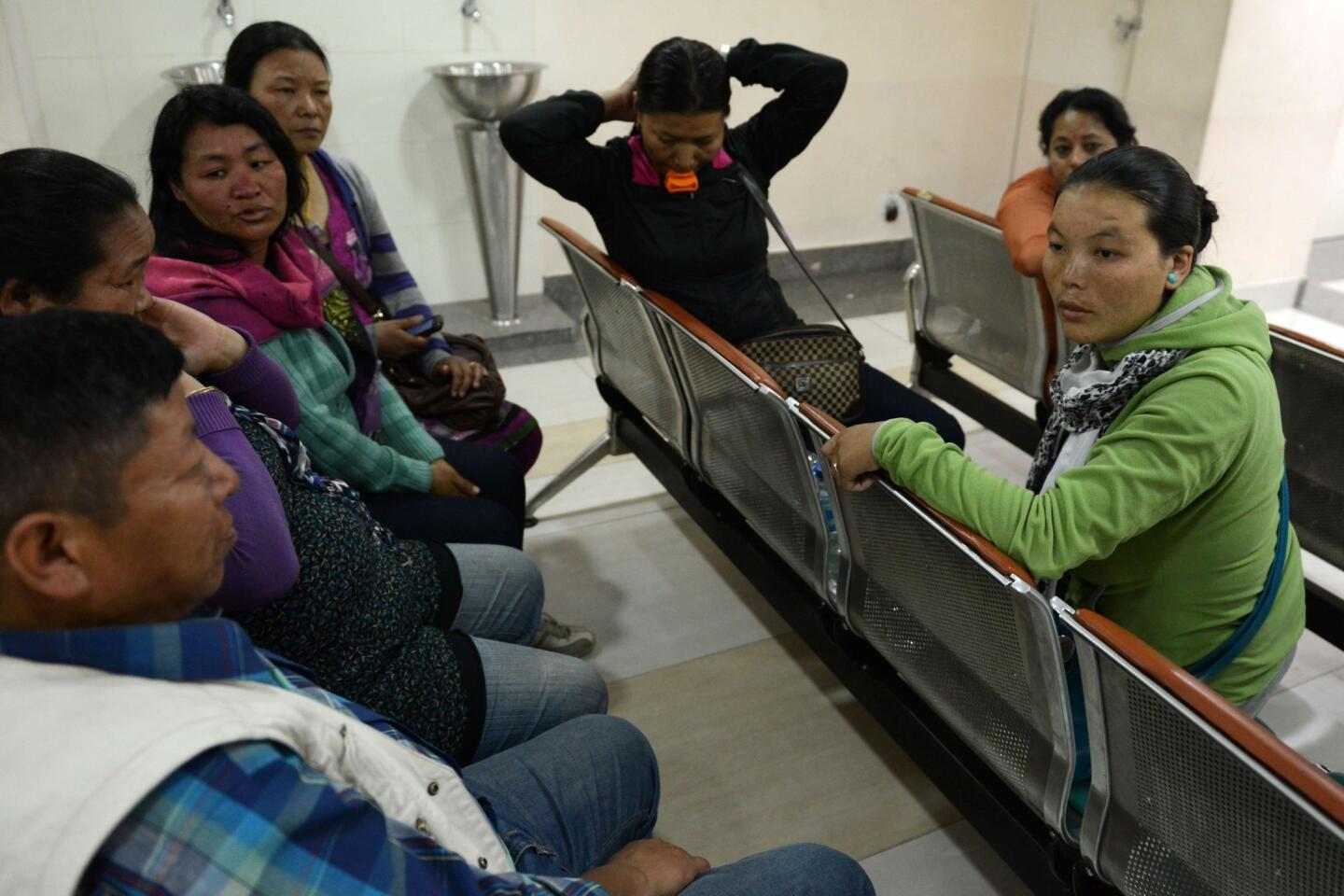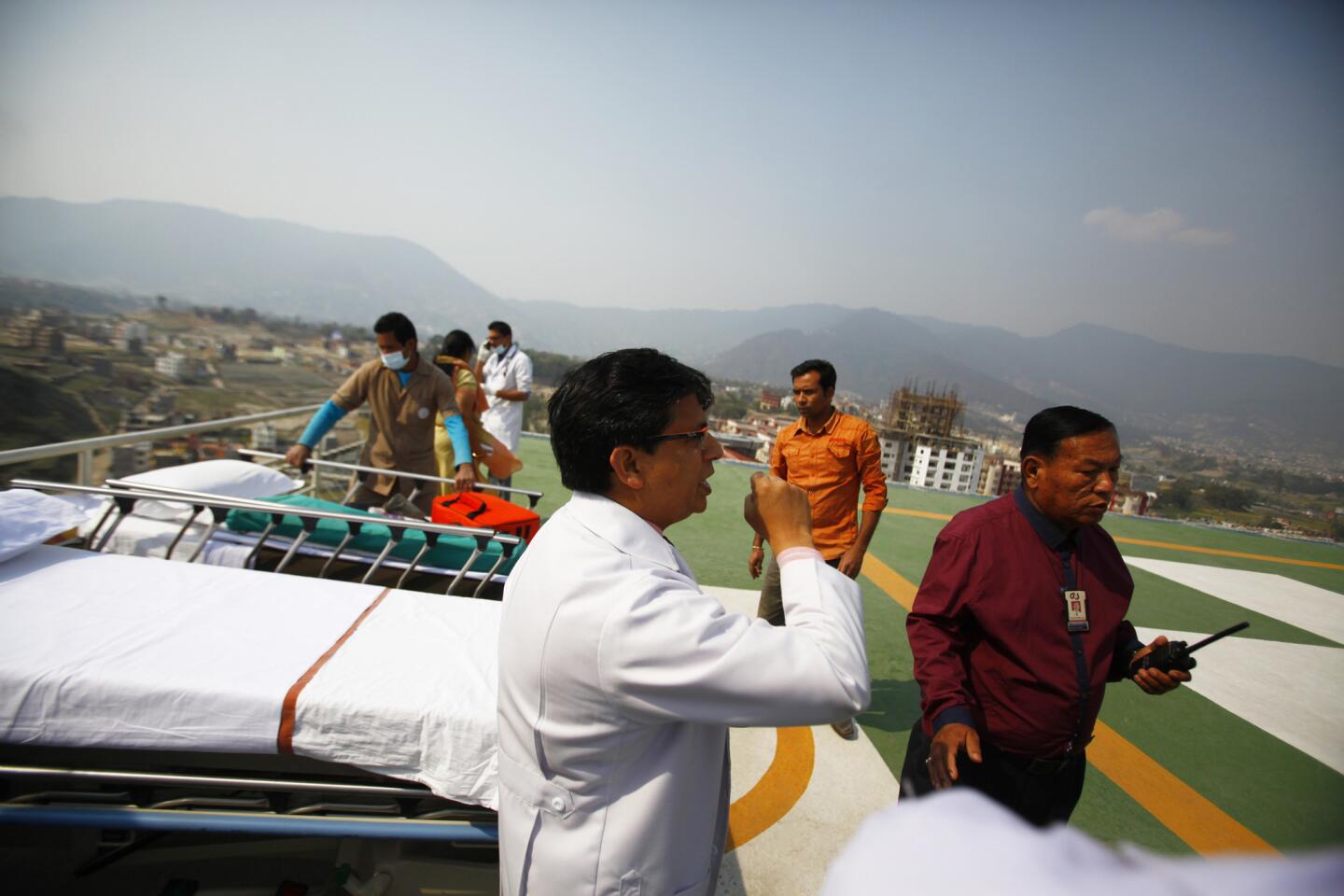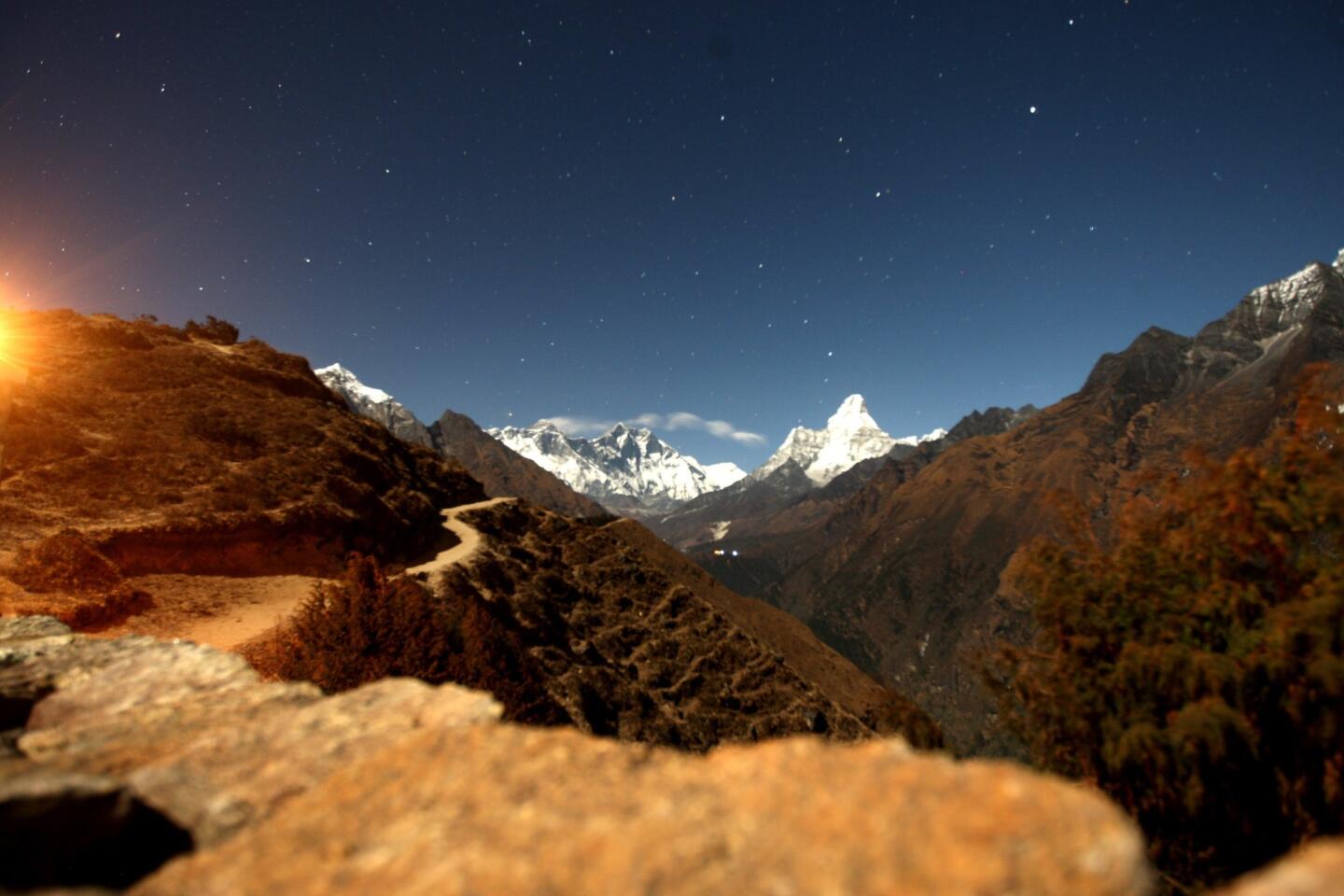13th body pulled from snow after Everest avalanche
- Share via
KATMANDU, Nepal — Search teams recovered a 13th body Saturday from the snow and ice covering a dangerous climbing pass on Mount Everest, where an avalanche a day earlier swept over a group of Sherpa guides in the deadliest disaster on the world’s highest peak.
Three guides remained missing, and searchers were working quickly to find them in case weather conditions deteriorated, said Maddhu Sunan Burlakoti, head of the Nepalese government’s mountaineering department. But the painstaking effort involved testing the strength of newly fallen snow and using extra ropes, clamps and aluminum ladders to navigate the unstable field.
The avalanche barreled down a narrow climbing pass known as the “popcorn field” for its bulging chunks of ice at about 6:30 a.m. Friday. The group of about 25 Sherpa guides were the first people making their way up this climbing season to dig paths and fix ropes for their foreign clients to use in attempting to reach the summit next month.
One of the survivors told his relatives that the path had been unstable just before the snow slide hit at an elevation near 19,000 feet. The area is considered particularly dangerous due to its steep slope and deep crevasses that cut through the snow and ice covering the pass year round.
As soon as the avalanche occurred, rescuers, guides and climbers rushed to help, and all other climbing was suspended.
Seven of the 12 bodies pulled out and brought down Friday were handed over to their families in the Everest region, while the other five were taken to Katmandu, Nepal’s capital.
Four survivors were conscious and being treated in the intensive care units of several Katmandu hospitals for broken ribs, fractured limbs, punctured lungs and skin abrasions, according to Dr. C.R. Pandey from Grande Hospital. Others were treated for less serious injuries at the Everest base camp.
Hundreds of climbers, guides and support crews had been at Everest’s base camp preparing to climb the 29,035-foot peak in May, when weather conditions are most favorable. As with each year, the Sherpa guides from each of the expedition teams had been working together to prepare the path by carving routes through the ice, fixing ropes on the slopes and setting up camps at higher altitudes.
One of the injured guides, Dawa Tashi, said the Sherpas were delayed on their way up the slope because the path was unsteady. With little warning, a wall of snow crashed down on the group and buried many of them, according to Tashi’s sister-in-law, Dawa Yanju. Doctors said Tashi, who was partially buried in the snowfall, suffered several broken ribs.
The Sherpa people are one of the main ethnic groups in Nepal’s alpine region, and many make their living as climbing guides on Everest and other Himalayan peaks.
More than 4,000 climbers have summited Everest since 1953, when it was first conquered by New Zealander Edmund Hillary and Sherpa Tenzing Norgay. Hundreds have died trying.
The worst recorded disaster on Everest had been a fierce blizzard on May 11, 1996, that caused the deaths of eight climbers, including famed mountaineer Rob Hall, and was later memorialized in a book, “Into Thin Air,” by Jon Krakauer. Six Nepalese guides were killed in an avalanche in 1970.
Earlier this year, Nepal announced several steps to better manage the heavy flow of climbers and speed up rescue operations. The steps included the dispatch of officials and security personnel to the base camp at 17,380 feet, where they will stay throughout the spring climbing season, which ends in May.
More to Read
Sign up for Essential California
The most important California stories and recommendations in your inbox every morning.
You may occasionally receive promotional content from the Los Angeles Times.
